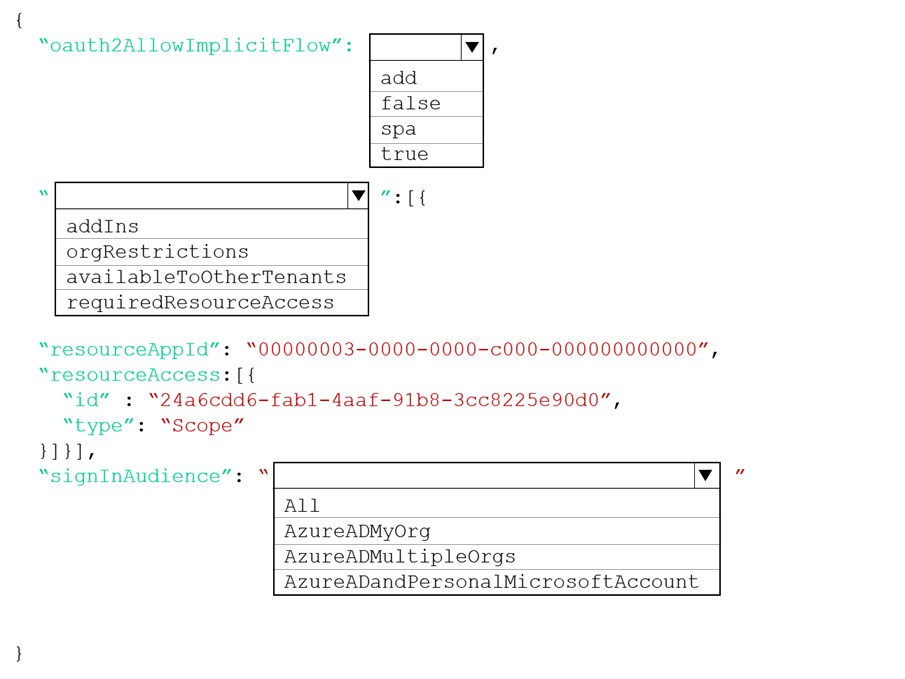Box 1: true -
The oauth2AllowImplicitFlow attribute Specifies whether this web app can request OAuth2.0 implicit flow access tokens. The default is false. This flag is used for browser-based apps, like JavaScript single-page apps.
In implicit flow, the app receives tokens directly from the Azure Active Directory (Azure AD) authorize endpoint, without any server-to-server exchange. All authentication logic and session handling is done entirely in the JavaScript client with either a page redirect or a pop-up box.
Box 2: requiredResourceAccess -
With dynamic consent, requiredResourceAccess drives the admin consent experience and the user consent experience for users who are using static consent.
However, this parameter doesn't drive the user consent experience for the general case. resourceAppId is the unique identifier for the resource that the app requires access to. This value should be equal to the appId declared on the target resource app. resourceAccess is an array that lists the OAuth2.0 permission scopes and app roles that the app requires from the specified resource. Contains the id and type values of the specified resources.
Example:
"requiredResourceAccess": [
{
"resourceAppId": "00000002-0000-0000-c000-000000000000",
"resourceAccess": [
{
"id": "311a71cc-e848-46a1-bdf8-97ff7156d8e6",
"type": "Scope"
}
]
}
],
Incorrect Answers:
- The legacy attribute availableToOtherTenants is no longer supported.
- The addIns attribute defines custom behavior that a consuming service can use to call an app in specific contexts. For example, applications that can render file streams may set the addIns property for its "FileHandler" functionality. This parameter will let services like Microsoft 365 call the application in the context of a document the user is working on.
Example:
"addIns": [
{
"id": "968A844F-7A47-430C-9163-07AE7C31D407",
"type":" FileHandler",
"properties": [
{
"key": "version",
"value": "2"
}
]
}
],
Box 3: AzureADMyOrg -
The signInAudience attribute specifies what Microsoft accounts are supported for the current application. Supported values are:
- AzureADMyOrg - Users with a Microsoft work or school account in my organization's Azure AD tenant (for example, single tenant)
- AzureADMultipleOrgs - Users with a Microsoft work or school account in any organization's Azure AD tenant (for example, multi-tenant)
- AzureADandPersonalMicrosoftAccount - Users with a personal Microsoft account, or a work or school account in any organization's Azure AD tenant
Reference:
https://docs.microsoft.com/en-us/azure/active-directory/develop/reference-app-manifest
https://docs.microsoft.com/en-us/azure/active-directory/develop/v2-oauth2-implicit-grant-flow
